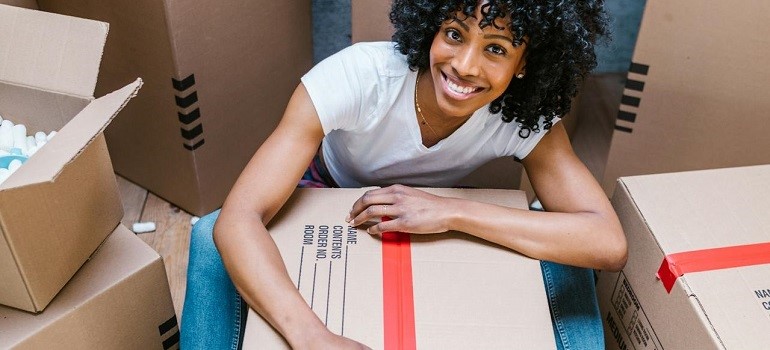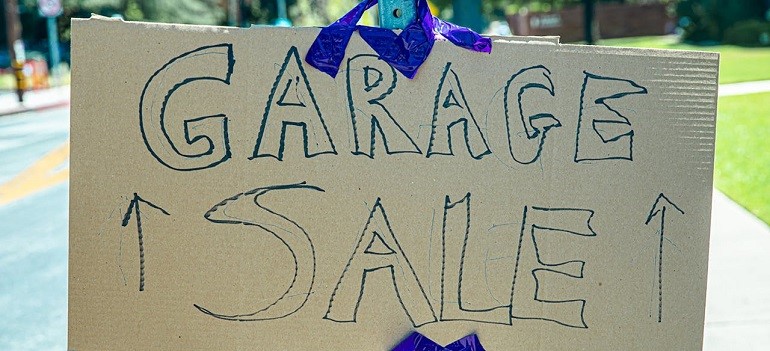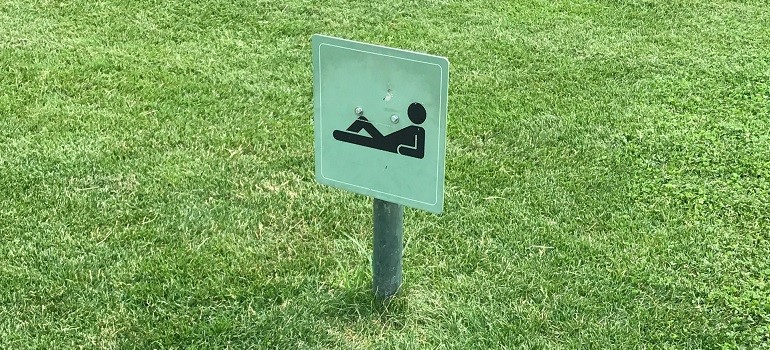Moving can be both an exciting and stressful time in your life. There are so many things to remember, so before you do anything start writing a complete moving checklist. Many tasks get forgotten in all the confusion, so planning is crucial. With a comprehensive list of tasks that need to be completed before the moving day your life will be a whole lot less stressful. Moving is a life-changing decision that will need lots of planning and organizing to make the move a successful one. On the other hand, there are various ways you can make the move smooth by the use of organizational processes, and an essential tool is a well-thought-out checklist for your move.
Timing considerations when making the checklist for your move
One of the biggest challenges of any move is keeping track of your schedule. There are many tasks to take care of and many appointments to keep with your household movers. You can buy a wall calendar and hang it up, so your moving schedule is always visible. You can also hang a marker or pen on a string with it, so you can mark appointments and dates on the fly. Things to include on your timeline:
- Initial Move Consultation
- Packing Day Appointments
- Moving Day Appointments
- Utility Shut Off Dates
- Dates to Get Utilities Turned On
- Move-In Day
- Dates to Get Personal Items Packed

Another option is to set up Google Calendar with all of your appointments and ‘due dates’ for tasks. This is great for local moves undertaken by families. You can share the checklist for moving out with each family member. Plus, you’ll have the option of creating color coded tasks for everyone in the family.
2 months before the move
- Get quotes from at least three moving companies in your area and be informed of their policies and protocols on their operations for moving. For instance, if moving in Bay Area, you should contact your local moving companies in Bay Area California and ask about prices.
- Know your rights and responsibilities as you prepare to work with a moving company.
- Consider extra insurance coverage that you may need for your move, and start consulting with your insurance company about the fees, etc. It is most applicable if you have a lot of different major appliances, furniture, paintings, and glass materials.
7 weeks
- Get the word out that you're moving. You would want to inform your family, friends, and neighbors about moving soon, so you may spend more time with them before saying Au Revoir to the neighborhood or city.
- Assess your closet for clothes that you still want to keep and those that you'd want to sell or give away. Make major decisions about furniture and supplies, whether you would opt to buy new ones for your new home, or keep them with you. This is the best time to have a garage sale.
- Transfer records from your local agencies to their branch in your new area. If you have kids, this will also be the best time to transfer school records.
- Change your address. Notify your doctors, banks, insurance company, newspaper, and magazine subscriptions, so they may make necessary changes as to where they would mail or contact you.

6 weeks
- Facilitate an in-home assessment and a fee estimate with the moving company that you've decided to work with. Make sure they have your present home address, as well as the address of your new place, so there won't be any problems with directions on the actual moving date.
- Use a "moving folder" wherein you will put an inventory of all your household items and furniture to be included in the move.
- Place all your important personal and professional documents in one folder, properly labeling it with your complete name, home address, and contact number on the front.
- Start consuming food that is in your refrigerator, freezer, and pantry.
5 weeks
- In case you're moving with cats and dogs, you need to plan for your pets. When you're moving, you don't do it alone. Your pets are always staying with you no matter where you're going, so it's better to consider factors in every decision along the way that will also accommodate your pets to have a smooth transition.
- Determine your packing supplies. You will need to get hold of bubble wraps, scotch tapes, moving boxes, etc., to pack your stuff in such a way that will not compromise their quality. If moving in Bay Area moving supplies provided by local movers are your best bet for a safe move.
- Have a box labeling system. You will need to allocate one part of the house to have all the boxes in one place, with each box containing a group of similar items.
- Book hotels and transportation services ahead of time. You might actually have to stay in a hotel in your new area, one or two nights before your actual move, and it's always better to book things ahead of time to avoid inconveniences in the future.

4 weeks
- You should start packing and focus on delicate items and other everyday belongings that you can do yourself. Place the items in their designated boxes or folders to make things organized. Remember, organization is key.
- Jot down in a small notebook all contact numbers that you will need for the actual move. This includes the moving company's contact number, their designated driver assigned to you, their agent, your insurance company, your transportation services company, etc. This notebook will come in handy, especially if you're in a tight situation in the middle of moving and need to contact the right person right away.
- Book your day off from work. Employers and co-workers will appreciate it if you have a one-month advanced notice!
- Change your address with the US Postal Service.
3 weeks
- Secure all your important belongings, jewelry, and heirlooms in a safe or your luggage with a lock system.
- Start throwing trash from all over your house and segregate the garbage properly.
- Look up local businesses, doctors, banks, etc., in your new area and have access to the necessary paperwork needed for registration and applications.
2 weeks
- Double-check with your moving company with all the information, down to the very specific details of the move.
- Withdraw cash, just in case anything goes wrong. There might be unexpected expenses along the way to your new area, and you would always want to be prepared.
- Go through your list of inventory to make sure everything is in place.
- Dispose of all flammable items that cannot be transported (e.g., paint, chemicals, etc.)
- Make sure the appliances are okay to transport. Freezers must be defrosted, all appliances unplugged, and gas lines disconnected.
- Get yourself ready physically and emotionally before the week of the actual move. Eat well and get some rest!
Week of the move
- Keep in touch with your moving company all throughout the transition to make sure everything runs smoothly.
- Revisit the checklist for your move one more time.
- Take one last look around the house, if the electricity and water are turned off, if there is anything else left, etc.
- Arrive at your area one or two days before the move. You would want to be there before the moving company arrives.
- Hire a cleaning company to clean your previous place so the new owners may have a clean, dirt-free space.
Adjust the checklist for your move if moving out-of-state for the first time
It’s easy to get overwhelmed by the process of moving, especially if you are relocating long-distance or to a different state. Long-distance moves involve more planning than local ones. You’ll deal with:
- extra costs
- regulations
- travel logistics
Unlike a short local move, you can’t easily go back for forgotten items or fix paperwork delays. Everything must be in order before the move begins. To help you get a successful start to the interstate move, get multiple quotes from different moving companies from both your current location and the place you're going to.

If you're moving a long distance from your current location, you should always double check that your car is good to go. Nothing would be worse than moving and getting a flat tire or your battery dying en route.
Important paperwork for an interstate move
When moving to another state, gather all your key documents in one place. Start with personal identification:
- your driver’s license
- passport
- Social Security card
- birth certificate
These are often required for registering vehicles or enrolling in schools. Bring lease agreements or mortgage documents for your new home. Your moving contract, inventory sheet, and any insurance paperwork should also stay with you during the move.
For families, school records and immunization forms will be needed when registering children. If you have pets, carry vaccination records and license info. Once you arrive, update your driver’s license within 30 to 60 days—deadlines vary by state. Vehicle registration must also be transferred, often requiring proof of insurance and your old title. Some states, like California and Texas, charge registration fees upfront. Keep everything in a labeled folder or binder for quick access during and after the move. Don’t ship these items—keep them with you.
What should I budget for when planning a move?
Planning a move means setting a detailed and realistic budget early on. As top movers in Bay Area, we at Upline Moving CA would suggest including these additional costs in your budget:
- First and last month’s rent if signing a lease
- Pet transport services like Airpets or PetRelocation fees ($250 to $1,200)
- Temporary storage unit rental (5x10 unit averages $100 per month)
- Move-out cleaning services ($150 to $400 per home)
- Childcare or elder care for moving day coverage
- Tips for movers—usually 10–20% of the final bill
- Parking permits for trucks in urban areas
- Travel meals and overnight hotel stays for multi-day relocations
- Security deposit or utility setup fees in your new home
- Vehicle shipping if you aren’t driving (averages $1,000 for cross-country)

Even with a detailed budget, unexpected costs may still come up. Always add a 10–15% cushion to cover last-minute needs. For example, if you budget $6,000 for a long-distance move, reserve an extra $600 to $900 for surprises. This buffer can cover:
- appliance disconnections
- extra boxes
- overnight delays
- Bay Area storage units if needed
Use a simple spreadsheet with line items by category. Label each one with an estimate, vendor name, and payment date. Keep receipts organized and track every outgoing cost to avoid overspending.
Triple check all the details
Once again, you should always double and triple check all the finer details with the moving company. Call them to make sure you're aware of all the specific details, such as moving time and directions.
Now is the time to make sure that you know how you're going to be paying your moving company. Make sure the company is able to take the form of payment you're going to use.
After the move: Settling in smoothly
Once you’ve arrived, start unpacking your essentials room by room. Begin with the kitchen, then move to the bathroom and bedrooms. Make sure all utilities are active—check water, gas, electricity, and internet connections right away. Test your Wi-Fi and set up routers where signal strength is best. Update your address with banks, credit card providers, and streaming services. Also, change your shipping address on sites like Amazon. Take a walk around the neighborhood to locate stores, parks, and public transport stops.

Visit the nearest pharmacy and look up doctors, dentists, and emergency clinics. Register your vehicle locally and check trash pickup schedules. Help children feel at home by setting up their rooms first. Keep routines stable for pets and give them time to adjust. Introduce yourself to neighbors—simple greetings can make a big difference. The sooner you complete these tasks, the faster your new home will feel familiar.
Ready to make that checklist for your move?
One of the main takeaways you can take from this list is to always double check the details. It is never too soon to start preparing, as you'll save yourself time and money in the long run. Keep the checklist for your move in mind when the moving process starts and make sure to stick to the plan as much as you can.
Tags
Subscribe to Upline Moving's Blog










